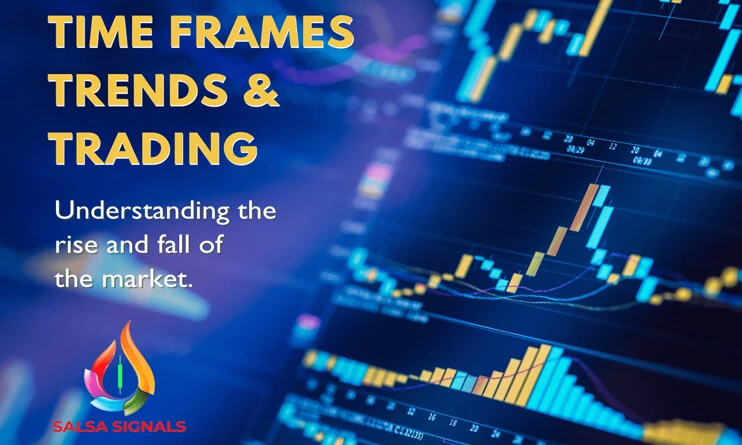We live in a world of polarities: You have to breath in and breath out; the ocean has high tides and low tides. The system can’t exist with only one of the two, but is instead dependent on the opposites for survival.
We find the exact same phenomena in the market; the tokenomics expand and contract and the markets rise and fall.
While crypto prices may appear to move randomly up and down, technical analysis shows that there are distinct repetitive cycles that occur. These are predominantly driven by the market moves made by large institutional investors. To trade successfully, individual traders should closely watch these market moves, or market cycles, and learn to ride the waves.
To consistently profit in the markets, traders need to learn how to identify an underlying trend in the cycle and trade accordingly. We’ve all heard the common clichés: “trade with the trend,” or “the trend is your friend till the end”, but how long does a trend last? When should you get in or out of a trade? What exactly does it mean to be a long or short-term trader?
To understand these, we first need to discuss time frames;
Trends can be classified as primary, intermediate and short term. However, markets exist in several time frames simultaneously. As such, there can be conflicting trends within a particular coin depending on the time frame being considered. It is not out of the ordinary for a coin to be in a primary uptrend while being caught in intermediate and short-term downtrends.
Typically, beginner or novice traders focus on a specific time frame, ignoring the more powerful primary trend. Alternatively, traders may be trading the primary trend but underestimate the importance of refining their entries in a short-term time frame.
So, knowing this, what time frame should you be using?
A general rule is that the longer the time frame, the more reliable the signals being given. As you drill down in time frames, the charts become more polluted with false moves and “noise”. Ideally, traders should use a higher time frame to define the primary trend of whatever they are trading.
Once the underlying trend is defined, traders can then use their preferred time frame to define the intermediate trend and a faster time frame to define the short-term trend.
Some examples of putting multiple time frames into use could be:
– A short-term trader who focuses on 15Min to 1H charts for decisions, could use the 4H to define the primary trend and 60-minute charts to define the short-term trend.
– A Scalper could trade off of 1- 5 minute charts, use 60-minute charts to define the primary trend and 15min to define short term trend.
– A Day trader could focus on 4H To 8H charts to refine entries and exits, while using daily charts to define the primary trend.
– A Swing trader could focus on weekly charts while using monthly charts to define the primary trend and daily charts to refine entries and exits.
EXAMPLE OF DAY TREND WITH SMALLER 4H TRENDS IN BETWEEN
In this example, although the trend is upwards on the day chart, multiple trades both up and down could have been accomplished.
EXAMPLE OF A 4H TREND WITH 1HOUR TRENDS IN BETWEEN
In this example, we can see the 4H down trend, yet the market still gives us an opportunity to execute smaller 1-Hour trades to the upside – a scalpers dream.
The selection of what group of time frames to use is unique to each individual trader. Ideally, traders will choose the main time frame they are interested in, and then choose a time frame above and below it to complement the main time frame. As such, they would be using the long-term chart to define the trend, the intermediate-term chart to provide the trading signal and the short-term chart to refine the entry and exit. One note of warning, however, is to not get caught up in the noise of a short-term chart and over analyse a trade.
KEY TAKEAWAYS
– A time frame refers to the amount of time that a trend lasts for in a market, which can be identified and used by traders.
– Primary, or immediate time frames are actionable right now and are of interest to day-traders and high-frequency trading.
– Other time frames, however, should also be on your radar that can confirm or refute a pattern, or indicate simultaneous or contradictory trends that are taking place.
– These time frames can range from minutes or hours to days or weeks, or even longer.
In a nutshell, the market will always give us an opportunity, no matter the direction of the market. It is up to us, to understand the trends and play them accordingly. We here at Salsa Signals will help you do just that. Join us and let’s trade the trend together!
Salsa Signals is no longer available in our Online Store. Visit the BitcoinTAF Online Store for other similar options.
Happy Trading!
The SALSA SIGNALS TEAM
Follow us on socials






